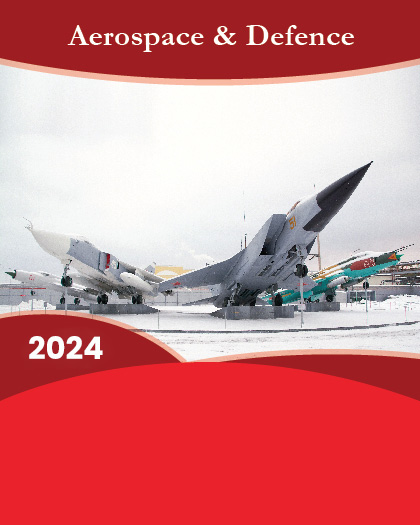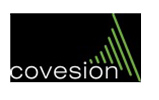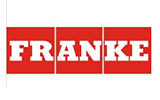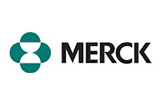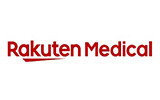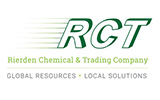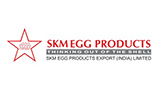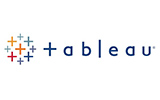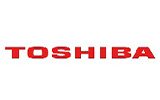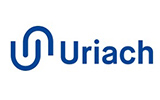Table of Contents:
1 Executive Summary
2 Market Introduction
2.1 Definition
2.2 Scope of the Study
2.3 List of Assumptions
2.4 Market Structure
2.5 Key Takeaways
2.6 Key Buying Criteria
3 Research Methodology
3.1 Research Process
3.2 Primary Research
3.3 Secondary Research
3.4 Market Size Estimation
3.5 Forecast Model
4 Market Dynamics
4.1 Introduction
4.2 Drivers
4.2.1 Development of Electric Drones
4.2.2 Increasing Use of UAVs in Commercial Sector
4.2.3 No Fuel Emissions
4.2.4 Rising Usage of Drones for Industrial Applications
4.3 Restraints
4.3.1 Issues Associated with Data Processing
4.3.2 Limited Flight Range & Endurance
4.4 Opportunities
4.4.1 3D-Printed Drones
4.4.2 Introduction of Solar Powered Drones
4.4.3 Usage of Drones in the Energy Sector
4.4.4 Increasing need for border monitoring
4.5 Challenges
4.5.1 Prone to Cyber Attacks
4.5.2 Regulatory Norms & Safety Issues
5 Market Factor Analysis
5.1 Supply Chain
5.2 Porter's Five Forces Model
5.2.1 Threat of New Entrants
5.2.2 Bargaining Power of Suppliers
5.2.3 Bargaining Power of Buyers
5.2.4 Threat of Substitutes
5.2.5 Intensity of Rivalry
6 Global Drones Market, By Type
6.1 Overview
6.1.1 Fixed-Wing
6.1.2 Multi Rotor
7 Global Drones Market, By Capacity
7.1 Overview
7.1.1 Up to 100 kg
7.1.2 Over 100 kg
8 Global Drones Market, By Application
8.1 Overview
8.2 Military Drones
8.2.1 Surveillance
8.2.2 Emergency Communications
8.2.3 Combat Operations
8.2.4 Search & Rescue
8.2.5 Others
8.3 Commercial Drones
8.3.1 Purpose
8.3.1.1 Mapping & Surveying
8.3.1.2 Climate & Pollution Monitoring
8.3.1.3 Filmmaking & Photography
8.3.1.4 Cargo Transportation
8.3.1.5 Passenger Carriage
8.3.1.6 Others
8.3.2 Agriculture
8.3.2.1 Field Mapping
8.3.2.2 Crop Scouting
8.3.2.3 Crop Spraying
8.3.2.4 Agricultural Photography
8.3.2.5 Precise Agriculture Management
8.3.2.6 Agriculture Insurance Inspection
8.3.2.7 Others
8.3.3 Industry
8.3.3.1 Construction
8.3.3.2 Oil & Gas
8.3.3.3 Mining
8.3.3.4 Logistics
8.3.3.5 Aviation
8.3.3.6 Telecom
8.3.3.7 Others
9 Global Drones Market, By Component
9.1 Overview
9.1.1 Airframe
9.1.2 Payload
9.1.3 Guidance Navigation & Control
9.1.4 Propulsion System
10 Global Drones Market, By Region
10.1 Overview
10.2 North America
10.2.1 US
10.2.1.1 US by Type
10.2.1.2 US by Capacity
10.2.1.3 US by Application
10.2.1.3.1 US by Commercial Application
10.2.1.4 US by Component
10.2.2 Canada
10.2.2.1 Canada by Type
10.2.2.2 Canada by Capacity
10.2.2.3 Canada by Application
10.2.2.3.1 Canada by Commercial Application
10.2.2.4 Canada by Component
10.3 Europe
10.3.1 Germany
10.3.1.1 Germany by Type
10.3.1.2 Germany by Capacity
10.3.1.3 Germany by Application
10.3.1.3.1 Germany by Commercial Application
10.3.1.4 Germany by Component
10.3.2 UK
10.3.2.1 UK by Type
10.3.2.2 UK by Capacity
10.3.2.3 UK by Application
10.3.2.3.1 UK by Commercial Application
10.3.2.4 U.K by Component
10.3.3 Russia
10.3.3.1 Russia by Type
10.3.3.2 Russia by Capacity
10.3.3.3 Russia by Application
10.3.3.3.1 Russia by Commercial Application
10.3.3.4 Russia by Component
10.3.4 France
10.3.4.1 France by Type
10.3.4.2 France by Capacity
10.3.4.3 France by Application
10.3.4.3.1 France by Commercial Application
10.3.4.4 France by Component
10.3.5 Italy
10.3.5.1 Italy by Type
10.3.5.2 Italy by Capacity
10.3.5.3 Italy by Application
10.3.5.3.1 Italy by Commercial Application
10.3.5.4 Italy by Component
10.3.6 Rest of Europe
10.3.6.1 Rest of Europe by Type
10.3.6.2 Rest of Europe by Capacity
10.3.6.3 Rest of Europe by Application
10.3.6.3.1 Rest of Europe by Commercial Application
10.3.6.4 Rest of Europe by Component
10.4 Asia-Pacific
10.4.1 China
10.4.1.1 China by Type
10.4.1.2 China by Capacity
10.4.1.3 China by Application
10.4.1.3.1 China by Commercial Application
10.4.1.4 China by Component
10.4.2 Japan
10.4.2.1 Japan by Type
10.4.2.2 Japan by Capacity
10.4.2.3 Japan by Application
10.4.2.3.1 Japan by Commercial Application
10.4.2.4 Japan by Component
10.4.3 South Korea
10.4.3.1 South Korea by Type
10.4.3.2 South Korea by Capacity
10.4.3.3 South Korea by Application
10.4.3.3.1 South Korea by Commercial Application
10.4.3.4 South Korea by Component
10.4.4 India
10.4.4.1 India by Type
10.4.4.2 India by Capacity
10.4.4.3 India by Application
10.4.4.3.1 India by Commercial Application
10.4.4.4 India by Component
10.4.5 Australia
10.4.5.1 Australia by Type
10.4.5.2 Australia by Capacity
10.4.5.3 Australia by Application
10.4.5.3.1 Australia by Commercial Application
10.4.5.4 Australia by Component
10.4.6 Rest of Asia-Pacific
10.4.6.1 Rest of Asia-Pacific by Type
10.4.6.2 Rest of Asia-Pacific by Capacity
10.4.6.3 Rest of Asia-Pacific by Application
10.4.6.3.1 Rest of Asia-Pacific by Commercial Application
10.4.6.4 Rest of Asia-Pacific by Component
10.5 Middle East & Africa
10.5.1 UAE
10.5.1.1 UAE by Type
10.5.1.2 UAE by Capacity
10.5.1.3 UAE by Application
10.5.1.3.1 UAE by Commercial Application
10.5.1.4 UAE by Component
10.5.2 Saudi Arabia
10.5.2.1 Saudi Arabia by Type
10.5.2.2 Saudi Arabia by Capacity
10.5.2.3 Saudi Arabia by Application
10.5.2.3.1 Saudi Arabia by Commercial Application
10.5.2.4 Saudi Arabia by Component
10.5.3 Israel
10.5.3.1 Israel by Type
10.5.3.2 Israel by Capacity
10.5.3.3 Israel by Application
10.5.3.3.1 Israel by Commercial Application
10.5.3.4 Israel by Component
10.5.4 Rest of Middle East & Africa
10.5.4.1 Rest of Middle East & Africa by Type
10.5.4.2 Rest of Middle East & Africa by Capacity
10.5.4.3 Rest of Middle East & Africa by Application
10.5.4.3.1 Rest of Middle East & Africa by Commercial Application
10.5.4.4 Rest of Middle East & Africa by Component
10.6 Latin America
10.6.1 Brazil
10.6.1.1 Brazil by Type
10.6.1.2 Brazil by Capacity
10.6.1.3 Brazil by Application
10.6.1.3.1 Brazil by Commercial Application
10.6.1.4 Brazil by Component
10.6.2 Mexico
10.6.2.1 Mexico by Type
10.6.2.2 Mexico by Capacity
10.6.2.3 Mexico by Application
10.6.2.3.1 Mexico by Commercial Application
10.6.2.4 Mexico by Component
10.6.3 Rest of Latin America
10.6.3.1 Rest of Latin America by Type
10.6.3.2 Rest of Latin America by Capacity
10.6.3.3 Rest of Latin America by Application
10.6.3.3.1 Rest of Latin America by Commercial Application
10.6.3.4 Rest of Latin America by Component
11 Competitive Landscape
11.1 Competitive Scenario
11.2 Market Share Analysis
11.3 Mergers & Acquisitions
12 Company Profiles
12.1 Developers of Drones for Commercial Applications
12.1.1 AeroVironment, Inc.
12.1.1.1 Company Overview
12.1.1.2 Financial Overview
12.1.1.3 Product Offerings
12.1.1.4 Key Developments
12.1.1.5 SWOT Analysis
12.1.1.6 Key Strategy
12.1.2 DJI
12.1.2.1 Company Overview
12.1.2.2 Financial Overview
12.1.2.3 Product Offerings
12.1.2.4 Key Developments
12.1.2.5 SWOT Analysis
12.1.2.6 Key Strategy
12.1.3 Parrot Drones SAS
12.1.3.1 Company Overview
12.1.3.2 Financial Overview
12.1.3.3 Product Offerings
12.1.3.4 Key Developments
12.1.3.5 SWOT Analysis
12.1.3.6 Key Strategy
12.1.4 PrecisionHawk
12.1.4.1 Company Overview
12.1.4.2 Financial Overview
12.1.4.3 Product Offerings
12.1.4.4 Key Developments
12.1.4.5 SWOT Analysis
12.1.4.6 Key Strategy
12.1.5 3D Robotics, Inc.
12.1.5.1 Company Overview
12.1.5.2 Financial Overview
12.1.5.3 Product Offerings
12.1.5.4 Key Developments
12.1.5.5 SWOT Analysis
12.1.5.6 Key Strategy
12.2 Developers of Drones for Military Applications
12.2.1 Airbus S.E.
12.2.1.1 Company Overview
12.2.1.2 Financial Overview
12.2.1.3 Product Offerings
12.2.1.4 Key Developments
12.2.1.5 SWOT Analysis
12.2.1.6 Key Strategy
12.2.2 Boeing
12.2.2.1 Company Overview
12.2.2.2 Financial Overview
12.2.2.3 Products Offerings
12.2.2.4 Key Developments
12.2.2.5 SWOT Analysis
12.2.2.6 Key Strategy
12.2.3 General Atomics
12.2.3.1 Company Overview
12.2.3.2 Financial Overview
12.2.3.3 Product Offerings
12.2.3.4 Key Developments
12.2.3.5 SWOT Analysis
12.2.3.6 Key Strategy
12.2.4 Lockheed Martin
12.2.4.1 Company Overview
12.2.4.2 Financial Overview
12.2.4.3 Products Offerings
12.2.4.4 Key Developments
12.2.4.5 SWOT Analysis
12.2.4.6 Key Strategy
12.2.5 Northrop Grumman Corporation
12.2.5.1 Company Overview
12.2.5.2 Financial Overview
12.2.5.3 Products Offerings
12.2.5.4 Key Developments
12.2.5.5 SWOT Analysis
12.2.5.6 Key Strategy
12.2.6 Thales Group
12.2.6.1 Company Overview
12.2.6.2 Financial Overview
12.2.6.3 Product Offerings
12.2.6.4 Key Developments
12.2.6.5 SWOT Analysis
12.2.6.6 Key Strategy
13 Conclusion
14 Appendix
14.1 References

